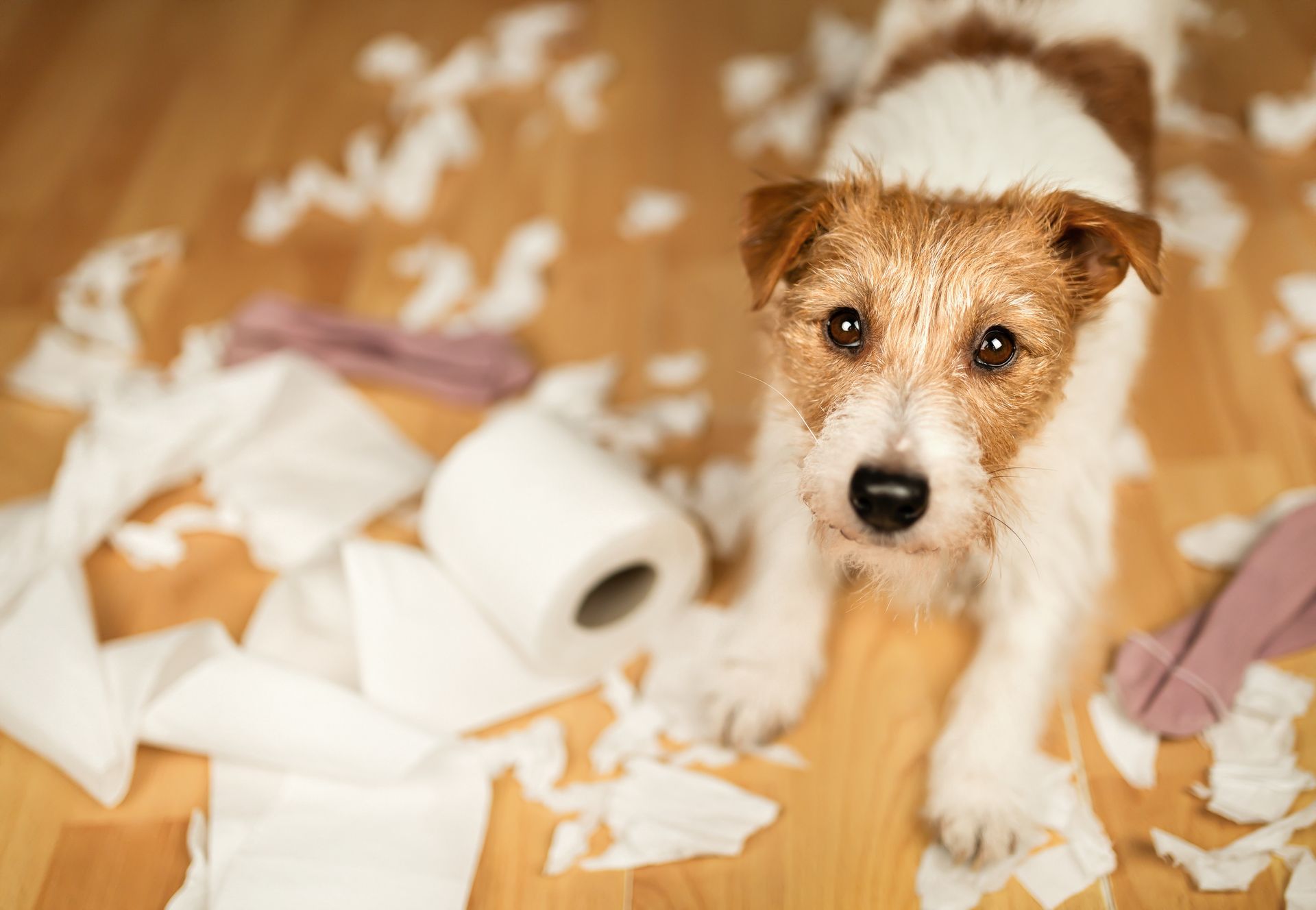Understanding Hyperactive Dogs: Causes and Solutions
Understanding Hyperactive Dogs: Causes and Solutions

A hyperactive dog can be much more than just a pet full of energy that enjoys jumping, running, barking, or playing with the owner at any time of the day. This behaviour, often seen as normal, can cause serious problems for your pet over time. Learn more about hyperactive dogs.
Hyperactive Dogs: What Causes This Behaviour
Canine hyperactivity is a type of behaviour that may originate from physiological or pathological issues. Learn how to differentiate them.
Physiological Hyperactivity
Canine hyperactivity is considered physiological when it arises due to the animal's exposure to negative behaviours from the owner. Among them, leaving the dog alone for long periods or not giving the attention the pet needs.
Pathological Hyperactivity
Pathological hyperactivity is caused by allergies to food or changes that cause hormonal imbalance in the dog's body. The most common is low serotonin levels, the hormone associated with well-being. Treatment for canine hyperactivity may include medication, behaviour modification, and lifestyle changes. It's important to seek the advice of a veterinarian to determine the best treatment plan for your pet.
Is Canine Hyperactivity Bad?
Yes, canine hyperactivity is bad! If this behaviour is not corrected, it can cause various problems for your pet. It can lead to anxiety, aggression, and destructive behaviour. It can also lead to health problems such as obesity, heart disease, and digestive problems.
The main consequences of a hyperactive dog are: exhibiting destructive behaviours, difficulties in socialization, and suffering from stress.
Symptoms of a Hyperactive Dog
The first step to preserving the health and well-being of your pet is to identify the symptoms of a hyperactive dog.
- Seeking attention
- Very short sleep
- Attention deficit
- Disobedience
- Object destruction
- Avoiding affection
- Excess energy
- Always staying alert
- Agitation even without stimuli
- Circling
- Excessive licking
- Decreased urination frequency
- Barking more than usual
I Have a Hyperactive Dog: What to Do?
Do you suspect that your pet is hyperactive? Then, it is important to seek the help of a trusted veterinarian. Only they can diagnose whether your animal suffers from canine hyperactivity or is just restless. It's important to address hyperactivity in dogs as soon as possible to prevent it from getting worse. Professional help may be needed in some cases.
How to Deal with a Hyperactive Dog?
The most recommended way to deal with a hyperactive dog is to offer daily stimuli so that it can expend energy. Just adopt a few habits. Check out our suggestions.
Daily Walks
Daily walks are a great option to provide physical and cognitive stimuli for the dog, in addition to helping it expend energy. Veterinarians recommend walking twice a day, always at times when the temperature is mild. A good tip is to vary the routes, so the pet will always have new stimuli. If you work all day and don't have time to take your dog for a walk, consider hiring a professional dog walker, someone you can trust. This can greatly improve your dog's health and energy expenditure.
Interact with Your Dog
Set aside small moments of the day to interact with your dog. Play fetch, treasure hunt (with treats), or other games. This type of interaction not only promotes energy expenditure but also improves the relationship between owners and pets.
Create a Routine for the Dog
The lack of a structured routine is one of the main factors for a dog to become hyperactive, as it generates anxiety in the pet. Therefore, it is essential to create a routine with specific times for meals and walks.
Invest in Interactive Toys
Dogs that spend much time away from their owner tend to be hyperactive because they spend most of their time sleeping and do not expend energy.
To keep your dog stimulated during your absence, a good practice is to invest in interactive toys. Combined with treats and wet food, they provide the cognitive stimulation that every pet loves.
Teach Tricks to Your Pet
Teaching new tricks and games is a great alternative to prevent the dog from becoming hyperactive. Simple tricks like sitting, standing, rolling over, or searching for treats improve the pet's mental health and make them less anxious.
Natural Calming Remedies
Flower essences are a kind of natural calming remedy that helps control canine hyperactivity. However, they should only be used with the authorization and prescription of a trusted veterinarian.
Seek Help from a Professional Trainer
Hiring a professional trainer is recommended in some more severe cases of canine hyperactivity. With small tricks and positive reinforcement, they will be able to condition the pet's behaviour. But remember! Even with the help of a specialist, the owner needs to create a healthy routine alongside the pet.
Conclusion
Understanding and addressing hyperactivity in dogs is crucial for their well-being and peace of mind. By implementing the strategies outlined in this guide, you can help your furry companion lead a happier, calmer life. Ready to explore more tips and resources for your hyperactive dog? Visit Dogs Welcome Here now and embark on a journey to a harmonious relationship with your beloved pet!


